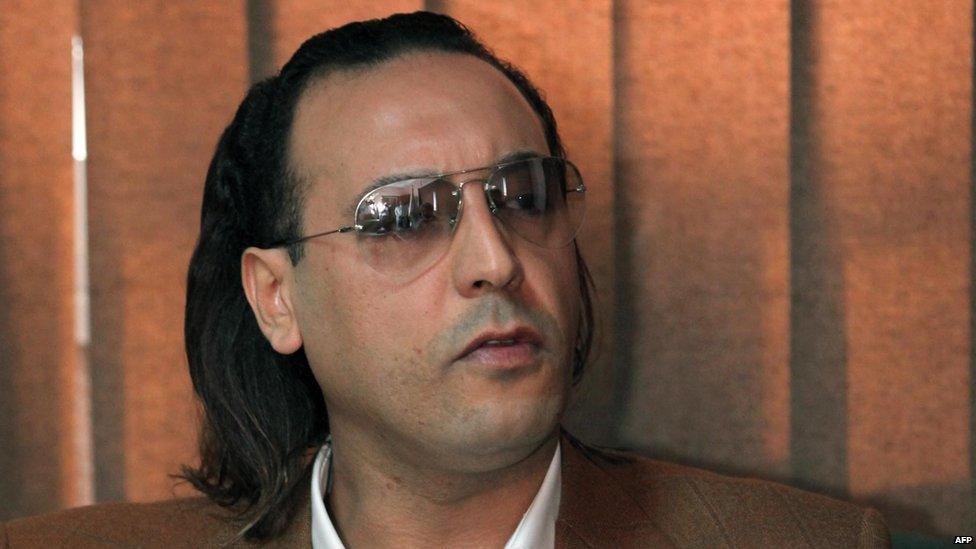Phosphate in the Maghreb fuels pollution and secrecy

Recent protests in Tunisia have shed light on the negative impact of the powerful phosphate industry in the Maghreb, with Morocco having also faced challenges due to the industry
Hundreds of people in Tunisia took to the streets on October 25th in the capital Tunis, over a dire environmental breakdown, prompted by pollution from a Gabès chemical plant, according to Reuters.
The demonstration follows a series of national protests over the crisis, with Tunisians organising a strike and intensifying their protests to denounce government inaction, as the state-owned Tunisian Chemical Group (GCT) factory pollutes their environment and endangers their health.
North Africa holds 85% of the world’s phosphate reserves. What’s more, Morocco’s soil holds over 70% of the world’s phosphate, as well as the largest phosphate reserves in the world.
But those living around plants claim they have suffered under a phosphate-rich terrain.
The industry’s economic and environmental impact
On July 28th 2025, a report by Follow The Money was released to unveil a journalistic investigation on Morocco’s phosphate industry. The report claims that in April 2025, the journalist Manon Stravens travelled to Morocco to research the subject and encountered difficulties when attempting to cover the environmental impact of the world’s largest exporter of phosphate derivatives, Morocco’s state-owned OCP.
With a rise in global demand for electric cars and fertilisers, as well as an international shift towards clean energy, phosphate is an essential mineral for the growth of these sectors. This has prompted Morocco to invest into the development of this highly-profitable industry. But this has come at a cost – a consequence the OCP is accused of trying to hide, according to the report by Manon Stravens.
The OCP is expanding its international presence, with plans to open a processing plant in Brazil to address wider regional needs, as a means of creating a supply chain that can handle the volatility of global markets.
Vakita reported in 2023 that Tunisia’s processing plant in Gabès dumps 14 tons of phosphogypsum (PG), water, and sludge per day indicating that the phosphate industry is a major source of pollution. PG is a by-product of the processing and according to a 2009 article in the Journal of Environmental Management, which was published in Science Direct, PG contains a large amount of impurities, such as heavy metals.
In the case of Morocco, the OCP is accused of disposing 40 million tonnes of phosphogypsum per year in the Atlantic Ocean as detailed in a document from the International Fertilizer Association. But perhaps the prospective international expansion of the OCP’s operations could also be an opportunity to relocate the environmental impact and burden of the industry onto other countries.
According to Al Jazeera, the effects of environmental waste dumping have been known for years in Tunisia’s Gabès. Since the ex-dictator Zine El Abidine Ben Ali was ousted in 2011, the residents of the city have been increasingly vocal about the issue.
“The effects of environmental waste dumping have been known for years in Tunisia”
Secrecy and diversion while they “Dump, baby, dump”
His toppling also gave way for humanitarian and environmental groups to document the pollution freely for many years. However, Gabès protesters have recently been arrested by the Tunisians authorities, which have intensified their crackdown on free speech in recent years.
It’s a similar story in Morocco where journalists are discouraged from reporting on the subject. Interestingly, the Follow The Money journalist, Stravens, spoke of surveillance fears, as a foreigner in the Moroccan city of Safi, where a processing plant is located.
The Dutch embassy informed her of “the sophisticated intelligence network” of informants that could notify the authorities of her arrival. When she wondered whether they could hack her laptop, her contact told her to expect the worst. This resonates with an Amnesty International 2022 report that uncovered the use of the Israeli spyware Pegasus by the Moroccan intelligence services to target journalists and activists.
The French journalist, Martin Boudot, who conducted a documentary about pollution caused by the Moroccan phosphate industry, explained to Stravens that while reporting in the country, he was followed by the Moroccan authorities.
And it’s not only foreign journalists. Salah Eddine Kharouai is a Safi-based journalist who has reported on environmental issues for years. According to ENASS, he has been charged with defamation and treason for his work.
The documentary “Morocco’s Soil Threat: Toxic Fertilizer Crisis”, reported that ever since Kharouai organised a protest to denounce the Safi plant’s pollution in 2014, he has been on the radar of the Moroccan authorities.

Compared to the GCT’s uncontrolled pollution of the surrounding air, land and sea in Tunisia, the OCP has at least tried to curb some of its environmental impact. In 2018, it announced that a new process reduced its gas emissions by 98%.
A report by the International Fertilizer Association highlighted that there are different methods used by the OCP to recycle phosphogypsum. The OCP has poured money into its research and development departments to attempt to reduce its environmental impact.
In the OCP’s 2023 sustainability report, they admitted to the challenges faced with processing the waste. But they did not mention efforts to purify the waste before it is dumped in the ocean, even as they detailed how they curbed emissions and harmful pollution in the rest of their supply chain.
Their environmental efforts align with Morocco’s broader green policies and its goal to supply 52% of the country’s energy needs using renewable solutions by 2030, with the country already heavily investing in solar farms. Notably, Hafed Al-Ghwell, the senior fellow and executive director of the Ibn Khaldun Strategic Initiative at the Foreign Policy Institute of the Johns Hopkins University School of Advanced International Studies in the US, has described Morocco as a green energy leader of the MENA region.
However, in the “Toxic Fertilizer Crisis” documentary, viewers were reminded that in 2014, the Safi plant was accused by residents of dumping its phosphogypsum waste directly into the Atlantic Ocean with a large pipe. Since then, the firm has opted for an underwater pipe to continue dumping part of the processing waste. Although, we do not know the length of the pipe, which many claim has polluted the drinking water in Morocco’s Safi.
A virulent poison for locals?
In Tunisia, people have gone further to complain about health issues. Gabès’s population has spoken out on the environmental impact of its chemical plant, and they have also spoken out on the effects of the pollution on their health, as the city is Tunisia’s hotspot for cancer, and respiratory illnesses among other health issues.
According to Stravens, the Moroccan social geographer Mustapha Azaitraoui has said that data on diseases, from cancer to dental issues, within the mining and processing areas of the OCP are either not publicly available or non-existent.
In 2019, the OCP refuted research that linked the Moroccan chemical group to the health and environmental harm inflicted on the areas where the company operates its various plants. According to the government-friendly H24 Info, seen as a mouthpiece for the elite in Morocco, the chemical firm also refuted any relation between itself and the respiratory issues of people in Safi.
Another by-product of phosphate mining is fluoride which has polluted the drinking water in Morocco’s Safi, which has led to many people in the city suffering from dental fluorosis, as claimed in the fertilizer crisis documentary. The disease leads to yellow or brown teeth.
Shortly after a dentist spoke about the issue of dental fluorosis in the fertiliser crisis documentary, he was reportedly threatened by his union. The OCP reportedly gave instructions to the union to not speak with Martin Boudot – the journalist spearheading the documentary. The union had issued a message to doctors, claiming Boudot had received funds from the OCP’s competitors to attack the state-owned group.
“In 2019, the OCP refuted research that linked… [it] to health and environmental harm”
Tellingly, Stravens spoke of the difficulty of setting up interviews with locals who are deeply unhappy with the OCP’s impact, a typical situation which most foreign journalists encounter these days, following the government’s tightening of freedom of speech. After some cancelled interviews without an explanation, Kharouai told the Dutch journalist that they were scared of the repercussions.

Even though the OCP provides jobs and related economic activity, the firm seems to have brought major issues to its mining areas.
Communities struck by poverty and unsafe conditions
Hamid Raoudi – of the human rights organisation AMDH, said to Stravens that phosphate mining brought misery and poverty to local communities, ultimately destroying arable land. He added: “High water consumption causes a lower groundwater level. Fluoride contamination of the drinking water turns our teeth brown.”
The “Toxic Fertiliser Crisis” documentary also claims that the Safi bay has also been impacted by the waste of the OCP plant. During an analysis of the water and shellfish near the ocean waste pipe, it was found that there was high levels of heavy metals and pollutants. According to the Guardian, previous studies demonstrated similar concerning levels of contamination near the discharge points of the OCP, and in the water surrounding various facilities.
Despite the negative impact on communities, the OCP has also carried out charitable work. The OCP Foundation is a branch of the company that has invested in local communities, mostly in Morocco and Africa, by providing financial aid for schools and grants for small to medium-sized businesses. As reported by the government-friendly HESPRESS in September 2023, the chemical firm donated MAD 1 billion for the Moroccan earthquake relief fund.
Nevertheless, the OCP is accused of putting its workforce at risk. The Guardian reported on the lack of appropriate protections provided by the firm for its employees who are directly exposed to dangerous chemicals. According to the publication, there seems to have been high cancer levels amongst people who worked in the Safi plant compared to their relatives who did not.
The Follow the Money report stated that the conditions in the OCP have led to 1,245 industrial accidents in the span of 5 years, which is also stated in the OCP’s annual reports.
Hamid Roaudi told Stravens that he wants the OCP to start involving the local communities in the firm’s decision-making to mitigate the harm that has been inflicted on them.
While the OCP has made significant efforts to reduce its impact on the population and areas where it operates, it is evident that it is still causing pollution at significant levels, according to a number of respected journalists. Concerns about health and environmental issues linked to the plants need to be addressed comprehensively and transparency is essential, moving forward.
Al Jazeera and agencies, Reuters, Follow The Money, BC Insight, Investing News Network, Vakita, International Fertilizer Association, H24 Info, Amnesty International, ENASS, OCP, Java Films, YouTube, OCP Foundation, Hespress, The Guardian, Science Direct via Journal of Environmental Management, Maghrebi.org
Want to chase the pulse of North Africa?
Subscribe to receive our FREE weekly PDF magazine












